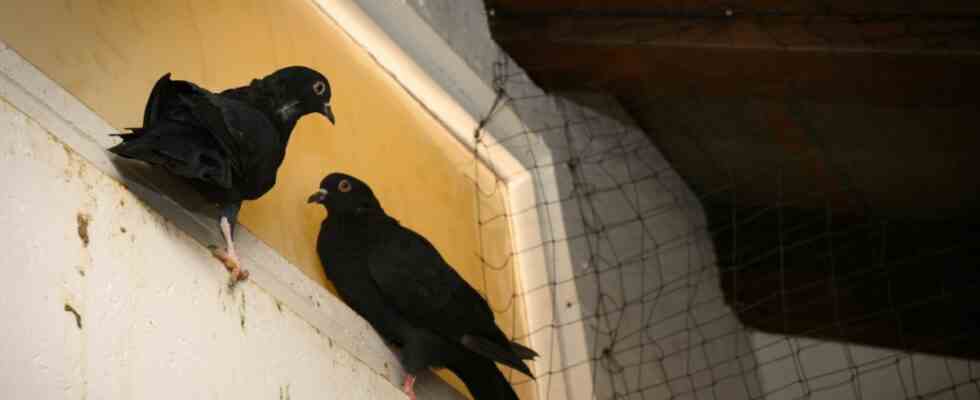Diagonally opposite Stollen-Franze, a mother gave in to her son’s whinging and bought an “Altbayerische Auszog’ne” at the Feinkost Winter stand at the Christmas market on Marienplatz. The happily grinning boy tears apart the lard and puts large pieces of it in his mouth – while crumbs trickle onto the floor and remain on the ground. But not for long. Because the next moment a white-grey dove flutters over, pecks at a crumb and hurries away – with the treat in its beak.
There is no question that Marienplatz is not only an attraction for tourists, but also for pigeons – and not just during the Christmas market. Because where pretzels, sausages and burgers are eaten standing and walking, there is always something for the birds. In addition, the Viktualienmarkt, a land of plenty, is only a few wing beats away. And then there are also animal lovers who regularly hand out bird seed despite the ban – for example in the arcade of the old town hall.
All of this has led to a visible increase in the number of pigeons in downtown Munich, including the unsightly side effects – from bird droppings to constant cooing. In order to get the population of the animals under control, after years of searching for a location, the city has now built a pigeon house – in the attic of the old town hall. In the future, 80 pairs of birds will find a home in the 18 square meter shed.
This is where they will leave most of their droppings. There, however, their eggs are also exchanged for dummies in order to limit the reproduction of the animals. The “Augsburg Model” is the name of this concept, which Munich has also been following for a number of years. The number of birds here is estimated at 50,000 – and the trend is rising.
“Pigeons don’t have a big lobby, also because they aren’t as instagrammable as baby cats,” said Deputy Mayor Katrin Habenschaden (Greens) at the opening of the 23rd pigeon house in Munich – the first in the old town. Nevertheless, they are living beings “that we as a city want to treat with dignity”.
In the past, the animals were caught and even killed
Whereas the pigeons used to be caught and sometimes even killed, today a three-pillar model is used. First, feeding is banned throughout the city; Violations are punished with fines of initially ten euros and repeated offenses of up to a thousand euros. Second, an information campaign should help. And thirdly, there are the pigeon houses, all of which are looked after by volunteers.
In the old town hall, the association “Einsatz für Tier” is responsible for cleaning the bird sanctuary regularly, refilling water and feed, and collecting the eggs. In the pigeon house on the wholesale market hall, 500 of these would be exchanged for dummies every year, reports municipal officer Kristina Frank (CSU). And the deputy environmental officer in the town hall, Boris Schwartz, calculates: “A pigeon produces ten to twelve kilos of wet droppings a year. With 50 pigeons in a pigeon house, that results in a ton of droppings a year that does not end up on floors and buildings.” The success of previous deterrence measures such as nets, bars and spikes is manageable. This does not solve the problem, but usually only shifts it.
For this reason, too, the city wants to build a nationwide network of pigeon houses, but this is still a long way off. In 2010, the first of these bird homes was built on the roof of a high-rise building in the student city. According to Schwartz, the city’s aim is to build two new pigeon houses every year. The search for a location often proves to be problematic – also because a number of residents reject the birds in their neighborhood. The fear of a health hazard is unfounded, emphasizes Doris Quinten, veterinarian and board member of “Einsatz für Animals”https://www.sueddeutsche.de/muenchen/.”City pigeons do not transmit diseases to humans.”

